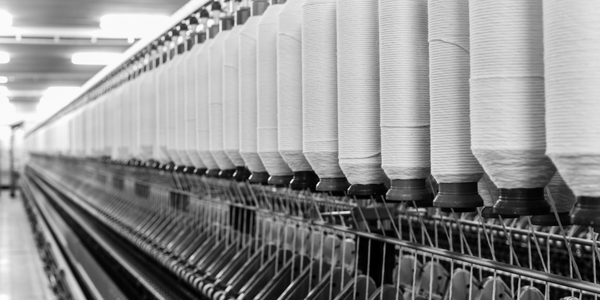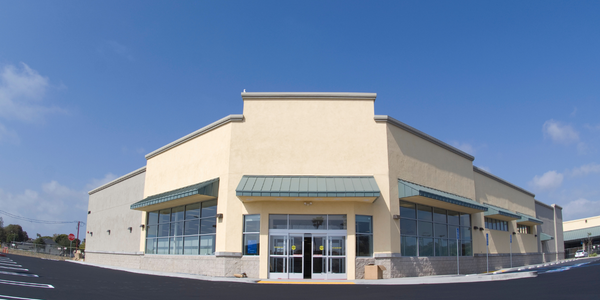公司规模
Large Corporate
地区
- Asia
国家
- Hong Kong
产品
- EXTOL Business Integrator (EBI)
技术栈
- Data Integration
实施规模
- Enterprise-wide Deployment
影响指标
- Productivity Improvements
- Customer Satisfaction
技术
- 平台即服务 (PaaS) - 数据管理平台
适用行业
- 服装
适用功能
- 商业运营
用例
- 供应链可见性(SCV)
服务
- 系统集成
关于客户
The Apparel Group Ltd. 是一家成立于 1988 年、与香港 TAL Apparel Ltd 建立战略合作伙伴关系的公司。该公司经营着 30 多家百货商店和 MMRS、1,000 多家专业零售商和 15 多家电子商务零售商。多年来,该公司的业务模式不断发展,因此其 IT 环境也随之发生变化。该公司的目标是为客户创造更多价值、更易于开展新业务并改进其运营流程。
挑战
服装集团有限公司成立于 1988 年,与香港 TAL Apparel Ltd 建立了战略合作伙伴关系,该公司面临着多项挑战。该公司经营着 30 多家百货商店和 MMRS、1,000 多家专业零售商和 15 多家电子商务零售商,力求为客户创造更多价值、更易于获得新业务并改进其运营流程。该公司业务模式的改变必然导致其 IT 环境也发生改变。重点是转向单一来源、多平台集成工具,以节省时间、提高效率并提高可视性。
解决方案
Apparel Group Ltd. 选择实施 EXTOL Business Integrator (EBI) 来应对其挑战。EBI 充当中央集成中心,可以接受任何文件类型、自动执行数据交易并提供数据分析和订单可视性。选择此解决方案是为了节省时间、提高效率并提高公司运营的可视性。实施 EBI 代表了公司 IT 环境的重大转变,与其业务模式的变化相一致。
运营影响

Case Study missing?
Start adding your own!
Register with your work email and create a new case study profile for your business.
相关案例.

Case Study
Fire Alarm System and Remote Monitoring Sytem
Fire alarm systems are essential in providing an early warning in the event of fire. They help to save lives and protect property whilst also fulfilling the needs of insurance companies and government departments.Fire alarm systems typically consist of several inter-linked components, such as smoke detectors, heat detector, carbon monoxide, manual call points, sounders, alarm and buzzer. The fire alarm system should give immediate information in order to prevent the fire spread and protect live and property.To get maximum protection a shoe manufacturer in Indonesia opted for a new fire alarm system to monitor 13 production sites spread over 160 hectars. Although the company had an existing fire alarm system, it could not be monitored remotely.It was essential that the new system would be able to be monitored from a central control room. It needed to be able to connect to the existing smoke detector and manual call point. Information should be easily collected and passed on to the Supervisory Control and Data Acquisition (SCADA) system. Furthermore, the system should have several features such as alarm management, auto reporting, being connected to many client computers without additional cost, and run 24/7 without fails. The company also needed a system which could be implemented without changing the architecture of the existing fire alarm system.

Case Study
IoT Applications and Upgrades in Textile Plant
At any given time, the textile company’s manufacturing facility has up to 2,000 textile carts in use. These carts are pushed from room to room, carrying materials or semi-finished products. Previously, a paper with a hand-written description was attached to each cart. This traditional method of processing made product tracking extremely difficult. Additionally, making sure that every cart of materials or semi-finished products went to its correct processing work station was also a problem. Therefore, the company desired an intelligent solution for tracking assets at their factories. They also wanted a solution that would help them collect process data so they could improve their manufacturing efficiency.

Case Study
Retailer Uses RFID Scanner to Improve Efficiency
Patrizia Pepe wished to improve the logistics of their warehouse: accepting incoming goods from their production sites, movement of items throughout
the warehouse, and packaging of goods for distribution to the retail locations. They initially tried to use barcodes for this function. Because barcodes must be individually scanned within a line-of-sight, the acceptance of goods coming into the warehouse was too time consuming. Working with the University of Florence, Patrizia Pepe instituted a five-month pilot project beginning in August of 2009 to test the validity of an RFID solution. The pilot involved tagging of about 60,000 items for the second seasonal collection, and convinced the company to move forward with tagging all items.

Case Study
Monitoring and Controlling Automatic Mixing and Dispensing Machines
As technology advances, textile manufacturing has been transformed from a labor-intensive to a partially or fully automated industry. Automation is significant in all segments of textile production - from spinning to printing, and textile machinery manufacturers are constantly searching for new technologies and automation processes will increase the productivity of their machines. The color paste mixing and dispensing machine is an essential part of the printing and dyeing process. With the advantage of automatically computerized controls and database management, the system can significantly improve its dispensing precision, working efficiency and production quality as well as reducing material consumption.









